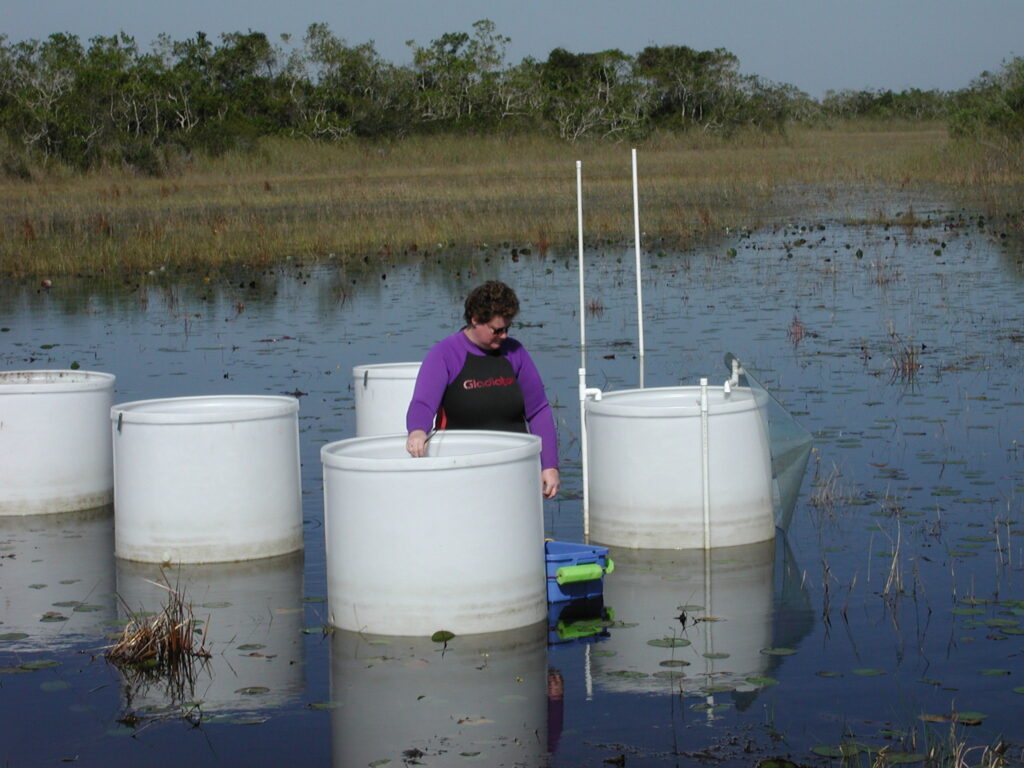by Cindy Gilmour
Dr. Cindy Gilmour recently retired from SERC after 18 years serving as the principal investigator of SERC’s Microbial Ecology Lab. Prior to coming to SERC, Cindy was a researcher at the Academy of Natural Sciences Estuarine Research Center. Below, she shares some of the discoveries and environmental victories she has seen over her four-decade career.
I feel very fortunate to look back on 40-plus years of mercury research and count some wins for the environment, some progress in understanding mercury biogeochemistry, and the friendship and collegiality of the research community.
Over the years in SERC’s Microbial Ecology Lab, we’ve studied the process of mercury methylation. This is an oddball reaction in nature, where microorganisms convert inorganic mercury, which is relatively stable, into a compound called methylmercury, which is much more toxic and can build up in the tissues of animals like fish. We’ve studied this process to better understand, and hopefully reduce, methylmercury risk to people and wildlife.
We have been able to learn enough to make policy recommendations. One of our biggest policy wins was mercury emissions controls on power plants. The power industry argued that since soils have been contaminated with atmospheric mercury pollution since the start of the Industrial Revolution, current practices wouldn’t have much impact on mercury levels in fish. The research community suspected otherwise, and we were right. Our discoveries contributed to federal air emissions regulations for mercury (and other pollutants like sulfuric acid). As a result, mercury deposition in much of the US has been reduced by more than a third and continues to drop. We are also starting to see declines in mercury levels in fish across the US.
The biggest policy losses were probably in agriculture and mining. Sulfate is a byproduct of both industries, released to local waterways. Although we and many others showed that the microbes that produce methylmercury are stimulated by sulfate, several attempts at regulations to reduce sulfate releases to waterways have failed. However, air emissions regulations are helping to reduce sulfate pollution in our surface waters.
It’s been a bit depressing to shut down my lab after all these years. But as we dig through the accumulation of lab equipment and supplies, I’ve been thinking about all the students, postdoctoral researchers, and technicians who used all that stuff, and the great work they’ve done since passing through. I’m proud of all of them and glad to watch many of them continue to push mercury research and policy forward.
More discoveries from SERC’s mercury research:
We’re Winning the Fight Against Mercury Pollution
Methylmercury Microbes More Widespread Than Realized


